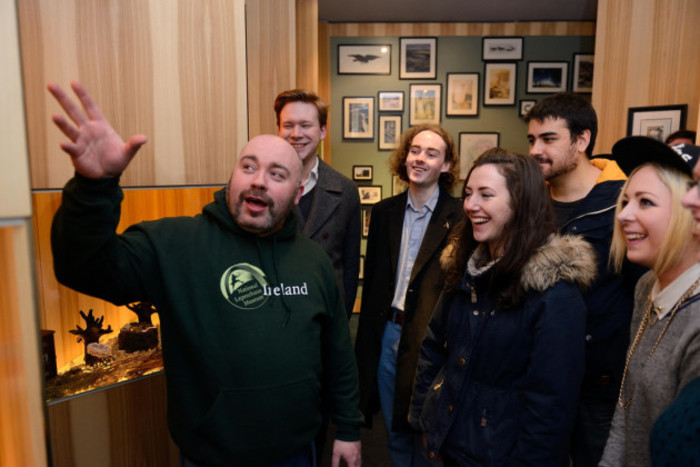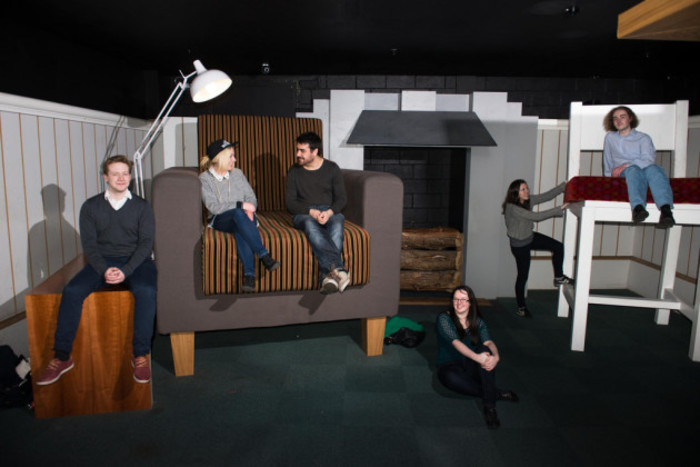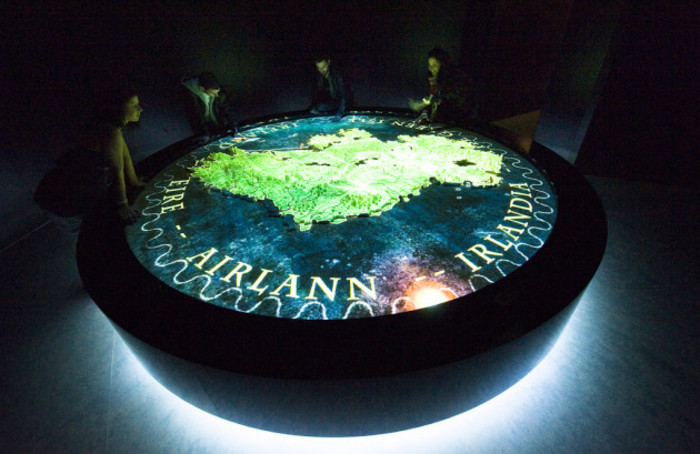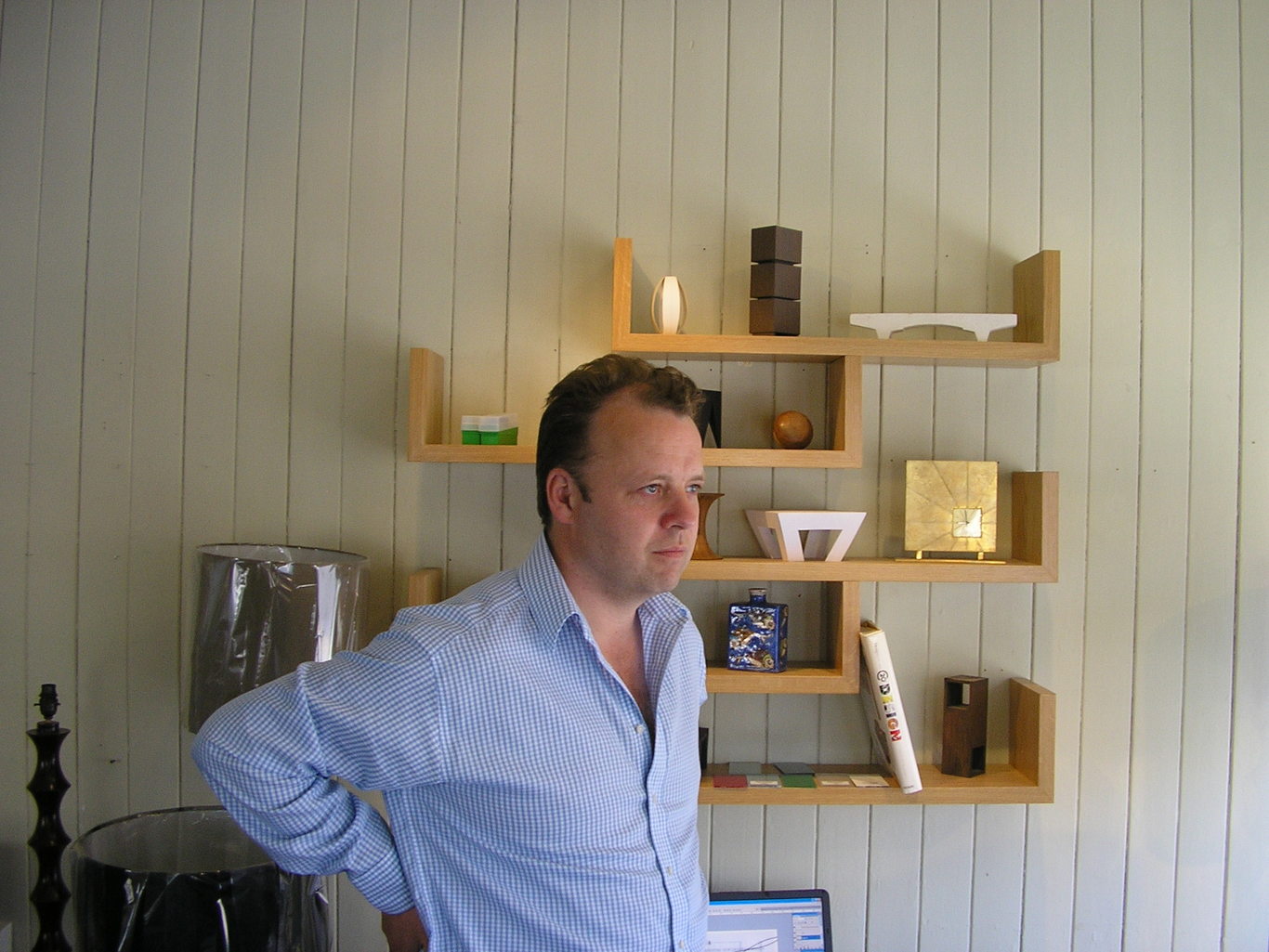'Tourist bodies don't want us to be seen as a leprechaun country. I found that interesting'
After a decade making furniture, this designer found his next calling was opening a museum.
BEFORE I OPENED the National Leprechaun Museum, I had been running a design business for around 10 years.
We did a lot of manufacturing and then moved into high-end fit-outs for private commercial clients and also exhibited at a lot of expos in Europe.
At one of the shows we made a bar and it ended up being a rather late night. In the morning I woke up and a thought just popped into my head: “Why are there leprechauns in Ireland and why has nobody else tapped into that?” That’s the way the whole thing got going.
I guess, like some people say, you fall in love with a problem – and for me it was about trying to find out why leprechauns are associated with Ireland.
At the time, there was a big resistance to leprechauns. People don’t like talking about them and tourist bodies don’t want Ireland to be seen as a leprechaun country. I found that really interesting.
If you looked at a map of Europe and they were doing identities for each country, you would have the Eiffel Tower for France, maybe some beer in Germany and specific characters for other nations. Certainly for Ireland, it would probably be represented by a leprechaun or maybe a shamrock or a pint.
I just thought we should take ownership of it and not run away from it. I think the leprechaun is a really easy way into folklore mythology and that’s what struck me because it was a story to tell.

First idea
I had the idea first in 2003, but it wasn’t something where you go, “that’s interesting”, and then put it back on the shelf to leave there. It was always in the back of my mind.
Around 2007, I started to properly lay out how I would approach the idea to turn it into a business. It became a process of saying to myself how many hours a week I was going to devote to this idea and setting out some targets for myself to get to understand it.
I started off by giving half a day a week to it for three months and after that period I sat back to see where that got me. Once I started dedicating time to the project, it started to accelerate pretty quickly. After the first three months I could see that the idea had legs.
I found the location for the museum in a very old-fashioned and uncomplicated way – walking the streets of Dublin.
We picked the place on Jervis Street because it was close to the city centre and had a good footfall, but at the same time there wasn’t a whole lot going on in the area.
If I did it again, the south side of the city would probably have been a better option since it has a more natural footfall of tourists. In this kind of business, 50m and 500m can be life or death – if you’re in the right place it can make a huge difference.
You can pick any main street in Dublin, like Grafton Street for instance, turn a corner and the rents drop quite significantly, and there’s a very good reason for that – the footfall drops off.
Fitting the place out
It all moved along quite quickly. We manufactured about 80% of what is in the museum in factories around Europe, shipped it into Ireland every Sunday morning at 4am and opened up seven weeks after signing the lease.
The hype was really good at the beginning because we kept our powder dry right up until two weeks before launch – we didn’t say to anyone else what we were doing.
It took off very quickly and got some really good coverage, including a double-page spread in the Guardian, a feature in Time Out magazine and a lot of interest from national media in Ireland.

In Ireland, most of what happens here is spread by word of mouth – without a doubt someone tells somebody else that this is what they should be interested in. For all the advertising and other ways of spreading the word, it really comes down to if someone’s engaged enough to tell someone else what they experienced.
So the business opened with a bang, but about a month after we launched, a volcano explosion in Iceland put a bit of a spanner in the works.
It certainly affected us since it had a big effect on the numbers of tourists coming to Ireland. The museum was empty for a few weeks. It was really significant for us and many other businesses in Ireland.
A lot of businesses are a leap of faith. You have a good idea, you think it’s worth doing and say, “let’s go for it”, but you can be never guaranteed it is going to work.
Twice a night every night for about a year I would think that the business wasn’t going to pan out – and when a volcano disrupts your business at a vital early stage, you begin to wonder a bit more.
Ups and downs
There have been quite a few highs and some of the ones from the early days of the business stick with me most.
I remember one day seeing a queue out the door, and of course when you see that it pops into your head that this might be working. It’s a nice feeling that people want to come and see what you imagined.
Also, since the start, there have been some people who tend to come in a bit skeptical, so when I can see them come out thinking it was very good at the end, that for me is a big thumbs up.

Looking back, there’s nothing I would do differently. Blind optimism and naivety is an underrated resource in entrepreneurship.
From my design business, I learned how to fail early and to understand what is and isn’t working, then either pulling the plug or fix it straight away.
One example that comes to mind is the information we had printed up in the museum. We looked at it, made a quick call that it simply wasn’t working and we trained the staff to explain it instead.
Ambitions for the company
During this year we have made some changes. We were approaching capacity during some stages, so we adjusted the pricing and dialled down the number on each tour in order to get people more engaged with their visit. I don’t want to cram people in the door if they’re not going to enjoy it.
We’re also keeping abreast of new technologies. The way I see it, virtual reality is going to feature really strongly in our experiences in the next few years. We’ve been keeping an eye on how that technology has been developing and we’re working out right now how to make it a feature in the museum.
I think it will change the way people experience the stories we’re trying to tell. We saw video game arcades disappear when home consoles came along, so it’s important for us to understand what VR is going to mean for our business.
In my mind, VR is both a threat and an opportunity. To be honest I see it as more of an opportunity, but still, the group experience is much stronger and there is nothing out there right now that will allow for a group experience in VR.
I think it will help people to value the effort of turning up somewhere, like our museum, for an experience. It will be the same for retail. People who come along to the museum will want a more engaged experience and that’s what we aim to deliver.
Tom O’Rahilly is the director of the National Leprechaun Museum. This article was written in conversation with Killian Woods as part of a series on unlikely entrepreneurs.
If you want to share your opinion, advice or story, email opinion@fora.ie.






